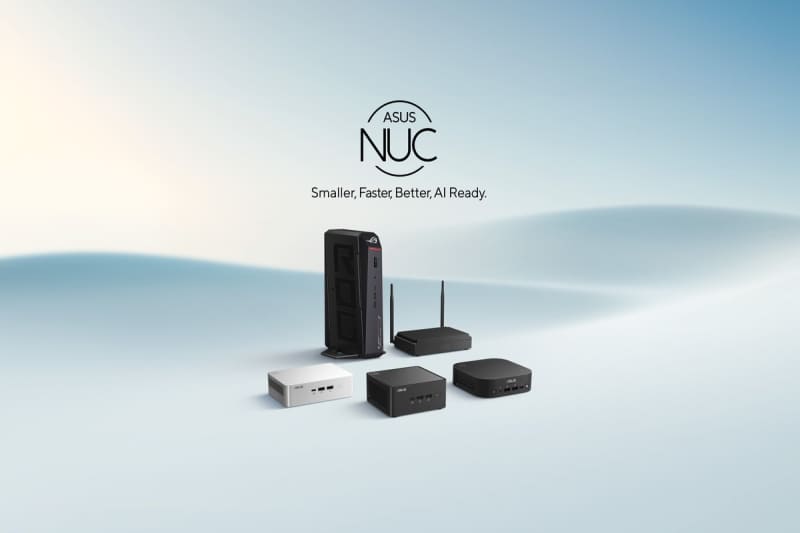
When CIOs discuss their top technology challenges, supporting artificial intelligence (AI) workloads usually gets the lion’s share of attention. But despite the AI hype, other critical infrastructure challenges remain for IT, and one of the most pressing is delivering robust computing capabilities in environments where physical space is at a premium and operational continuity is nonnegotiable.
Edge computing environments, for example, present a unique set of constraints that traditional IT infrastructure struggles to accommodate. If a retail company wants to set up digital signage and an interactive kiosk, it’s going to need to deploy powerful computing resources in cust…

When CIOs discuss their top technology challenges, supporting artificial intelligence (AI) workloads usually gets the lion’s share of attention. But despite the AI hype, other critical infrastructure challenges remain for IT, and one of the most pressing is delivering robust computing capabilities in environments where physical space is at a premium and operational continuity is nonnegotiable.
Edge computing environments, for example, present a unique set of constraints that traditional IT infrastructure struggles to accommodate. If a retail company wants to set up digital signage and an interactive kiosk, it’s going to need to deploy powerful computing resources in customer-facing areas where real estate comes at a premium. Manufacturers that are adopting Industry 4.0 capabilities on the factory floor — such as autonomous collaborative robots and AI-powered quality control — will need to fit computing into a space every square inch of which affects production capacity. Healthcare providers implementing telehealth solutions face the dual challenge of already limited clinical space and the critical need to support reliable, always-on systems.
The problem extends beyond mere physical dimensions. These use cases demand computing solutions that can operate continuously without the cooling infrastructure, power consumption, and maintenance requirements of traditional desktop or server hardware. A retail kiosk or factory floor controller cannot afford downtime for maintenance or cooling failures. Digital signage systems driving multidisplay configurations in corporate lobbies or transportation hubs need consistent performance while fitting into architectural designs that were never intended to house computing equipment.
Performance requirements compound these challenges. Modern edge applications increasingly require processing power that rivals that of traditional desktop workstations. Industrial IoT (Internet of Things) applications process sensor data in real time to coordinate autonomous robots and power quality control. Point-of-sale systems must deliver instantaneous transaction processing while maintaining security and compliance standards. Meanwhile, latency-sensitive applications cannot afford the delays inherent in routing data to distant data centers for processing.
The complexity multiplies when organizations attempt to scale these deployments. A single retail chain might need hundreds or thousands of identical edge computing installations across diverse locations, each requiring reliable operation with minimal local IT support. Standardization is critical, but flexibility is also essential, as different locations will have unique connectivity, power, and environmental conditions.
Traditional computing approaches fail to address this paradox. Standard desktops consume too much space and power. Thin clients lack the necessary processing capabilities. Purpose-built embedded systems offer neither the flexibility nor the performance modern applications demand. Organizations may find themselves forced into uncomfortable compromises between capability and practicality.
The minicomputer solution
Minicomputers designed specifically for commercial edge can address these challenges. These devices pack full-size desktop performance into compact form factors measured in inches rather than feet while meeting the reliability standards essential for continuous commercial operation. Purpose-built for 24/7 deployment, they incorporate enterprise-grade components, advanced thermal management, and robust connectivity options that address the specific demands of edge computing scenarios.
Modern minicomputers also provide the modular flexibility organizations need for scaling deployments efficiently. Whether implemented as complete plug-and-play systems, customizable kits, or embeddable computing elements, these solutions adapt to diverse use cases while maintaining standardized management and support processes. Rich I/O connectivity ensures compatibility with existing peripherals and displays, and AI-ready processors enable organizations to future-proof their edge infrastructure as new capabilities emerge.
ASUS exemplifies this approach with its NUC product line, offering Pro, Essential, and Rugged models tailored to various commercial requirements. Built through a partnership with Intel, these palm-sized devices deliver the computing performance, reliability, and versatility that modern edge environments demand, enabling organizations to deploy powerful computing capabilities wherever their business operations require them.
CIOs don’t have to choose between flexibility, compactness, and computing power. Minicomputers can provide all three, proving that, as the old adage says, good things do come in small packages.
To learn more about the ASUS NUC, visit us here.
© Foundry